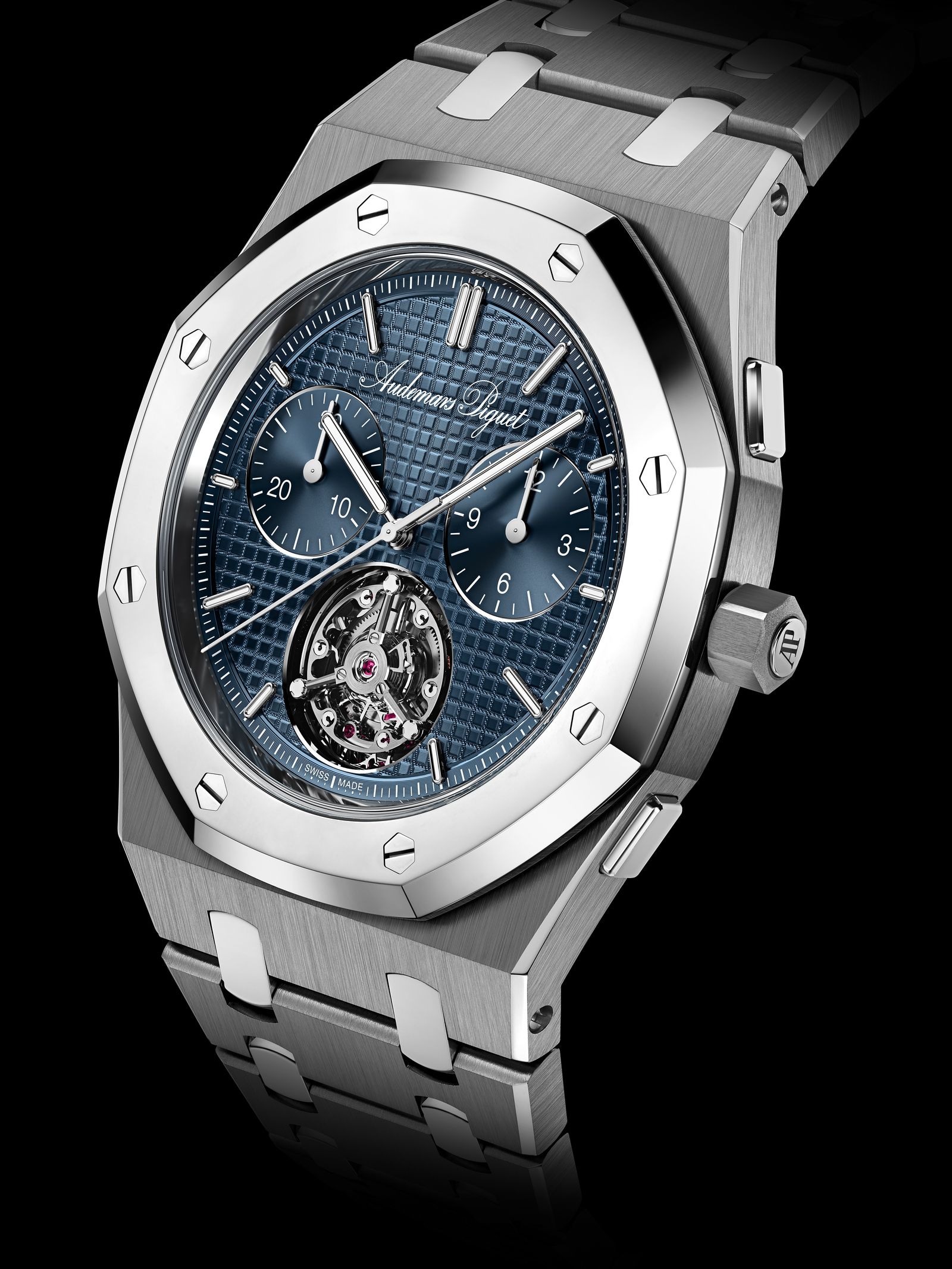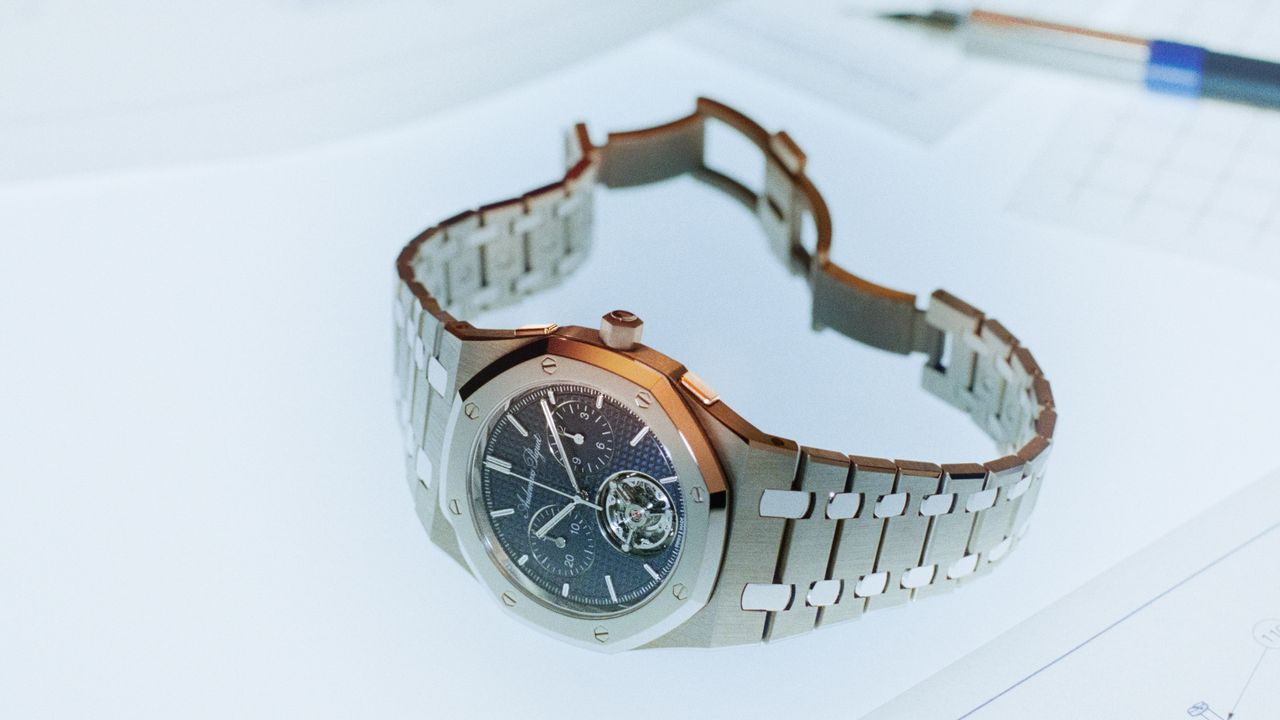Lucas Raggi, Audemars Piguet’s director of research and development, helps to cultivate the esteemed watchmaker’s many complex projects involving new complications, dial colors, and designs. There is a comforting and predictable flow, Raggi says, to making most watches: He and his team get a brief to develop a specific new watch or movement, they build prototypes, pick the ones they like, and then put them into production.
But to create AP’s latest release—the Royal Oak “Jumbo” Extra-Thin Selfwinding Flying Tourbillon Chronograph RD#5 (or simply “RD#5” for short), which was officially unveiled today—Raggi’s familiar procedure went out the window. It’s a completely unexpected watch (with iPhone-style buttons on the side!) that required a totally new way of thinking to create.
Here’s everything you need to know about this revolutionary timepiece.

Diode SA – Denis Hayoun
What is Audemars Piguet’s RD series?
Since 2015, Audemars Piguet has launched some of its most audacious projects through its RD—research and development—umbrella. With each release, the team has set out to establish a new industry standard or find a new solution to age-old watchmaking challenges. RD#1 was about jazzing up the sound of a minute-repeater, the rare complication which uses a series of dings, chimes, and gongs to tell the time through sound. RD#2 managed to fit all the components of a perpetual calendar on a single level to reduce the watch’s thickness, while RD#3 similarly slimmed down a tourbillon. Finally, RD#4 was about pure showmanship—with 23 complications and 17 “technical devices” packed inside, it was the most complicated watch AP had ever produced.
What was the challenge of RD#5?
Oh, nothing too crazy…just completely overhauling the operation of the chronograph, the built-in stopwatch function that has worked roughly the same way for 200 years.
Why, what’s the problem with it?
The buttons were too hard.
Huh?
You typically operate the chronograph function on a watch through the use of buttons—or “pushers”—along the side of the case. The team at AP noticed that on vintage watches, the pushers were “softer” than the ones on modern iterations—meaning you didn’t have to press down very hard to start, stop, and reset the stopwatch function. “The challenge came out of our frustration of feeling the sensation you could get in the vintage pieces,” Raggi said. They set out to recreate that feeling.

